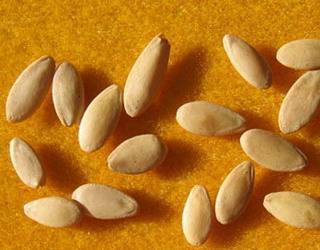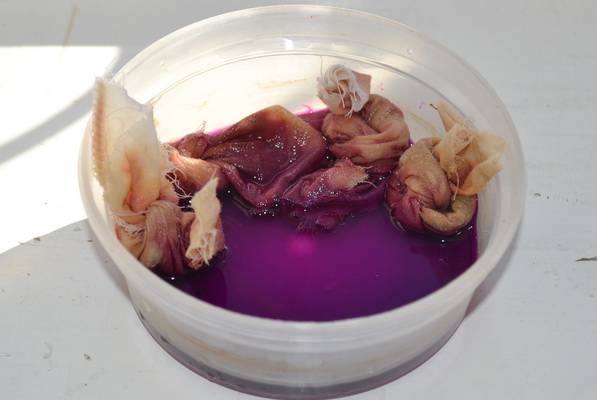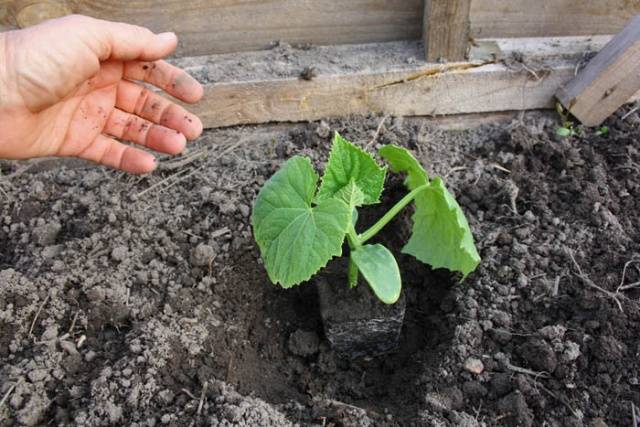Content
Good seedlings of cucumbers at home for a greenhouse is grown in compliance with all the rules. Cucumbers are a capricious crop of the pumpkin family that can be grown outdoors or indoors. In the second case, the likelihood of improving the quality of the crop and obtaining earlier fruits increases than when grown in a garden bed. To achieve the desired results, you need to grow strong and healthy seedlings.
Growing seedlings in a house or apartment
Proper cultivation of cucumber seedlings involves the following steps:
- preparation of soil and containers for cultivation;
- preparation and sowing of seeds;
- seedling care;
- landing at a permanent place.
In many regions, conditions for growing cucumbers in the open field are not always optimal, therefore, cucumber seedlings are often planted in a greenhouse or greenhouse. In this case, the choice is made in favor of self-pollinated varieties, for which no insects are needed for pollination. It is important that the planting of the cucumber seedlings is not too early. In this case, the risk of its outgrowth and weakening increases. The sprouts will be thin and elongated, pale green and too fragile. Such plants will not be able to produce a quality crop. Late planting threatens the growth of small and weak shoots that take a long time to take root after transplanting, increasing the likelihood of a later harvest. It is better to sow seeds for seedlings 3-3.5 weeks before transplanting to a permanent place.
Soil and seed preparation
It is important to prepare the ground or buy a ready-made one. This will speed up and facilitate the period of plant adaptation to new conditions. For cucumber sprouts, you can prepare a mixture of peat, turf, manure and sawdust (4: 4: 1: 1) or humus mixed with turf and sand (6: 3: 1).
The soil substrate is pre-disinfected. For this purpose, use steep boiling water, a solution of potassium permanganate or calcining in the oven. Then the soil is distributed in a container, which is also subjected to preliminary disinfection. It is important that the containers for each sprout are individual, since the cucumber seedlings cannot stand picks. Each cup should have a drainage hole to remove excess moisture. The container is half filled with soil.
Seed material can be conventional or processed. Regular must be sorted first. To do this, they are dipped in a strong saline solution: good seeds will drown, bad ones will float. After that, the seeds are washed, dried or processed. Treated seeds can be sown directly into the soil, they are covered with a protective layer that prevents the development of fungi and microbes. This layer also contains a number of nutrients that help the seedlings grow stronger.
Preliminary preparation of seeds for planting consists in disinfecting and stimulating them.
To solve the first problem, a saturated solution of potassium permanganate is used, in which the seeds are soaked for half an hour. After that, they are dried and soaked for about 12 hours in a solution of ash, taken in the amount of 2 tbsp. l. for 1 liter of water. Then they are wrapped in a damp material and left in a warm place.
After the appearance of a small root, the seeds are laid out in prepared containers and sprinkled with soil about 2 cm. Stimulate the growth of the plant with a special solution, for example, Epin. Then the soil is covered with a transparent material to create a greenhouse effect.Growing high-quality seedlings requires the establishment of an optimal regime.
The temperature of non-germination of seedlings should be at least 25 ° C.
Cucumbers love a lot of light, so it is important to take this feature into account and install additional lighting if there is a lack of it. Under these conditions, the seedlings of cucumbers for the greenhouse will grow strong.
Seedling care
After the sprouts appear, remove the transparent coating and monitor for good illumination. In this case, the temperature should be lowered by 3-5 ° C during the day, at night 18 ° C will be enough. Further care of the seedlings is as follows:
- Watering - plentiful, regular. You can check the degree of soil moisture by taking a little soil: if it crumbles, then it needs watering, but if a lump forms, then you can skip the wetting procedure. For irrigation, use only warm water with a temperature of 25 ° C. This condition allows the roots to develop better. In the first days before the full disclosure of the first leaves, watering should be done often, with the appearance of the second true leaf, moistening is performed less often, but a little more. It is important not to allow the soil to dry out, which can lead to an oppressed state of the root system of the culture.
- Top dressing - every 10 days. It is better to use liquid fertilizers, alternating mineral fertilizers with organic ones. The first are bred according to the instructions, and the second - in the amount of 2 tbsp. on a bucket of settled warm water. Feeding is desirable in the evening, and in cloudy weather - in the morning.
- Fight disease - another stage of care. Often, seedlings are infected with powdery mildew, provoking its appearance by cold watering and a thickened planting scheme. Yellowing of cucumber seedlings can be with an incorrect temperature regime or a decrease in soil fertility. High temperatures and a lack of moisture, as well as a lack of mineral elements in the earth, contribute to wilting of foliage. To prevent all factors, it is important to apply fertilizers on time, ensure normal moisture and regular ventilation. Without this, the cultivation will not be effective.
Preparation and planting in the greenhouse
In order to prepare the culture for planting in a permanent place, it is tempered. Home grown plants are very delicate and sensitive to any changes in the environment. They begin to harden three-week-old seedlings 2 weeks before transplanting. The procedure consists in gradually lowering the temperature and regularly ventilating the room. It is important to adhere to the following points when hardening:
- hardening time increases by 1-2 hours every day;
- in the early days, the sprouts must be shaded in order to save them from possible combustion under the influence of direct sunlight.
Seedlings can be gradually taken out to the greenhouse, where they will grow in the future. The hardening process helps to strengthen the shoots and improve the survival rate after transplantation. A high-quality seedling of cucumbers before transplanting to a permanent place is characterized by:
- the presence of at least 2 pairs of true leaves;
- strong short stem;
- bright green foliage;
- developed roots.
Planting of cucumber seedlings is carried out on the prepared soil in a checkerboard pattern. The planting depth should be equal to the depth of the container in which the sprout grew. In the case of transplanting flowering plants, it is better to remove the color to improve survival. When transferring sprouts with a lump of earth from the container to the holes, it is important to prevent injury to the root system. Seedlings do not need to be buried; after planting, they are spilled with warm water. Further cultivation consists in proper care, on which the yield and quality of the fruit will depend.













